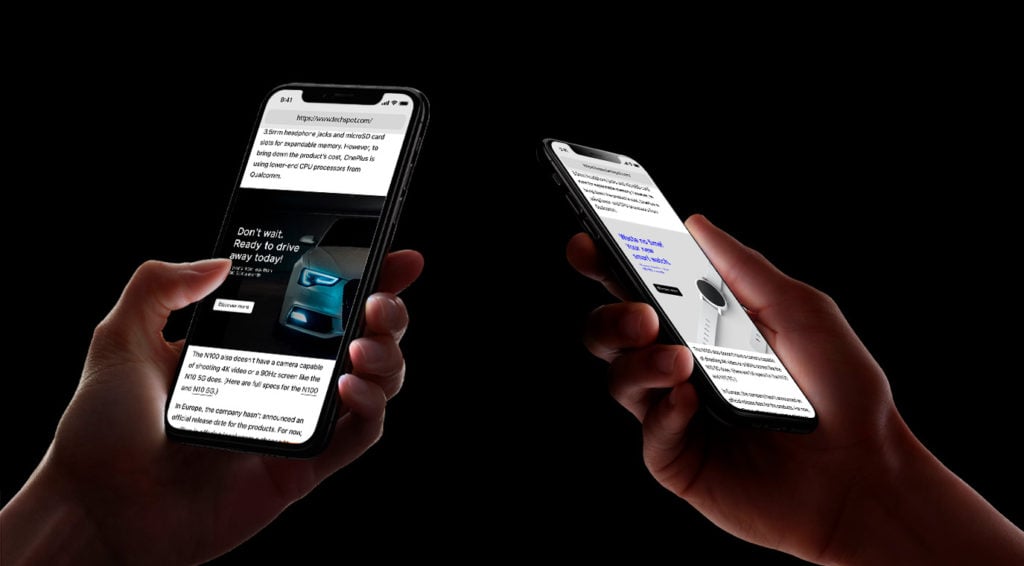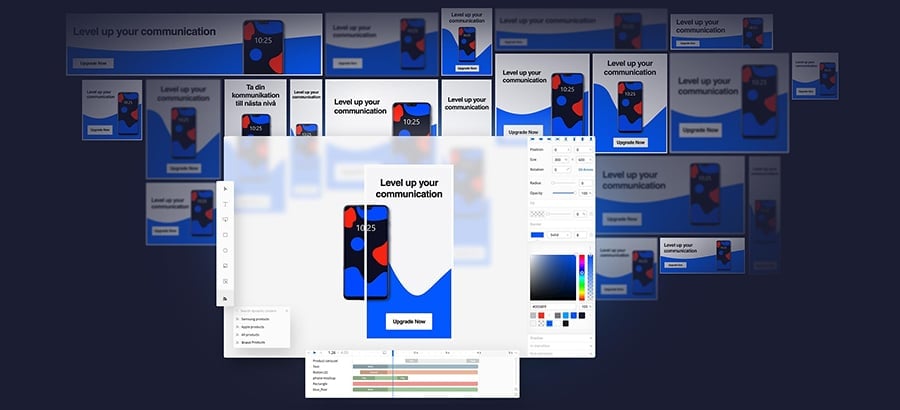Personalization within display advertising is growing ever more important. It is a key driver for increasing ad performance and getting a better return on investment from the channel.
According to research, 80% of businesses report increased consumer spending when their experiences are personalized. However, not all brands and industries use a form of either audience or one-to-one personalization.
For example, iGaming personalizes 21% of all its display ads, while retail personalizes just 11% of all its display campaigns. Yet, with increasing CTR rates and consumers spending more on brands that offer personalized experiences, the opportunity to increase ad performance through greater personalized content and messaging is clear.
In this article, we will explain the different types of personalization you can do with display advertising to drive results. Including:
- Audience personalization
- User journey targeting
- Geo-targeting
- Device targeting
- Demographics targeting
- Behavioral prospecting
- Contextual targeting
- Product targeting
- Parameter targeting
- One-to-one personalization
- Product retargeting
- Dynamic Creative Optimization (DCO)
Audience personalization in display advertising

1. User journey targeting
User journey campaigns show consumers ad variations designed specifically for each level of the sales funnel. From top to bottom, from awareness to retention. You only show viewers ad variants with the message and imagery that is right for them. User journey targeting uses your own first person, customer data to show specific ad variations.
2. Geo-targeting
Like the name suggests, this type of audience personalization relies on using location touch points to serve viewers with specific advertising. The touch-point data could be as simple as using an IP address or using a GPS location. The beauty of geo-targeting is that it lets you drill down to a granular level with your viewer.
3. Device targeting
Knowing the device that your ad is being served to is a powerful and mostly under-utilised form of audience personalization. Targeting by device enables advertisers to serve specific creatives to specific devices. For example, a telecom operator may target iphone users with the latest iphone in their ad creative. Or an ipad-specific game campaign is only ever shown on ipads.
4. Demographics targeting
This type of audience personalization sees brands using the first-person data they hold (or purchased third-party data) to plan and create specific messages. It means taking the same product and offer, and producing ads that target specific demographics. For example, within travel, demographic groups will have very different reasons for visiting a holiday destination, when compared to one another.
5. Behavioral prospecting
Behavioral prospecting focuses on targeting users, via personalized ad creatives, who are either researching or interested in specific things. It determines ad placement using cookies that track a user. This provides advertisers with personalized information on a viewer and can be used to create a digital profile – often created without the user’s knowledge.
Note: Since legislation such as the General Data Protection Regulation (GDPR) in Europe, and the California Consumer Privacy Act (CCPA) came into play, as well as restrictions on cookie usage in browsers (e.g. ITP), the era of easy behavioral prospecting ceased.
6. Contextual targeting
Contextual targeting is placing appropriate ads within the right contexts. Within display advertising, there are two very popular ways to target contextually. Directly selecting what creative your ads appear next to, or changing the content of ad creative, based on the content and keywords on a website. And targeting with your Demand Side Platform, DSP, programmatically to buy ad inventory that matches keywords and sentences.
7. Product targeting
Product targeting campaigns serve viewers with selected products and offers, via live, or spreadsheet-based, data. They target viewers who have browsed product pages, or have shown intent. Product campaigns target selected viewers, with specific products.
8. Parameter targeting
This utilises tracking based on external parameters made available by the web page. What’s more, these kinds of parameters (can potentially) help to serve display advertising that is tailored to a wide range of different campaign rules. For example, in affiliate display advertising, each affiliate has its ID, and a chosen display ad variant is served to an affiliate page based on this affiliate ID.
One-to-one personalization in display advertising

1. Product retargeting
Product retargeting is particularly useful for cross-selling or cart abandonment. Like product targeting it enables you to show an ad with a product that a viewer has previously expressed interest in and is an extremely effective form of dynamic ad. For example, it will display a product using a data feed in an ad, that is currently sitting in an unfulfilled shopping cart of a user.
However, you need to pay attention to your cookie usage. For retargeting cart abandonment with display ads, make sure to implement burn pixels for purchased items and set frequency caps to avoid irritating viewers.
2. Dynamic creative optimization (DCO)
Dynamic creative optimization is the ultimate way in which marketers can use data sources to personalize display campaigns. DCO applies live analytics, data sources and real-time creative optimization to select the most appropriate ad creative. The end product: hyper-relevant, personalized display ads.
For example, a DCO produced display ad will not only show info based on precise viewer geolocation, but may also select the best offers and the most suitable imagery for a specific viewer. DCO campaigns are both data-driven and creative. They also require a marketing team’s in-house processes, knowledge and technology to be at a high level.
Find out more about personalization
If you would like to find out more about personalization, we recommend you read Bannerflow's Handbook on Personalization at Scale. In it you can find all the information you need on marketing's current landscape, along with case studies on companies who have successfully used personalization at scale to increase their marketing ROI and create better customer experiences. The handbook also includes expert insights that can help you make the most of your personalization efforts.
If you would like to find out more about how Bannerflow can assist you in finding the right type of personalization for your brand, please get in touch.








